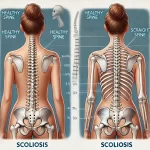In this article, we will explore the unique challenges and considerations associated with bone marrow transplantation in the elderly and examine some of the different ways the procedure has been developed to meet these specific needs.
Older adults have an inevitably higher risk of chronic health conditions and a higher risk of mortality due to age-related diseases and complications. This elevates a perceived risk of bone marrow transplantation. These conditions may accentuate the risks that come with bone marrow transplantation, so thorough evaluations need to establish a baseline level of health before the treatment. Understanding those factors is especially important when considering bone marrow transplantation for older adults.
One of the most significant challenges that older adults face when undergoing a bone marrow transplant is the increased likelihood of experiencing severe acute graft-versus-host disease (aGVHD), which is a potentially life-threatening immune system complication. AGVHD happens when the donor’s bone marrow attacks the recipient’s healthy tissue, causing damage throughout the body.
Another significant factor to consider when planning an HSCT is that the human body’s ability to heal decreases with age. It means older adults may require more extended periods to heal and recover than younger patients after an HSCT is completed. Long-term care is often needed to ensure elderly patients receive the support they need to get back to their optimum health.
While there are unique challenges that come with performing bone marrow transplantations on older adults, the benefits of HSCT make it a lifesaving treatment option worth considering. So, it is essential to understand how doctors and medical professionals have learned to adapt the procedure as they accommodate the unique challenges that come with bone marrow transplantation in older adults.
While the complications associated with performing bone marrow transplantation in older adults are challenging, medical professionals can take various precautions to reduce the risks and ensure that the procedure is a success. Below are some of the considerations put in place:
doctors and medical professionals typically perform an extensive evaluation of patients before carrying out an HSCT to determine their fitness for the bone marrow transplantation. This extensive assessment allows practitioners to identify potential health risks that could be accentuated during and after the procedure.
selecting the appropriate type of transplant is an essential consideration that can help minimize the risk of severe complications, especially in elderly patients. Allogeneic bone marrow transplantation uses donor cells to regenerate a patient’s healthy cells, while autologous transplant utilizes the recipient’s stem cells.
Allogeneic transplants have a higher risk of aGVHD than autologous transplants. While the source is often a family donor, a mismatched donor may require the use of T-cell depletion therapy. Avoiding full myeloablative conditioning can reduce the chances of the common acute and chronic complications of transplant like infection and graft versus-host disease.
doctors often tailor the chemotherapy and radiation dose quantities used for HSCT on a patient-specific basis. Lower doses are typically used for older adults as an effort to minimize potential harm to the patient’s system while still efficiently serving the primary purpose.
medical practitioners manage the side-effects and complications of HSCTs carefully. The chances for complications increase with the deteriorating medical condition of a patient. A team of medical professionals experienced in providing specialized care for elderly patients is integral to the care and management of side-effects and complications.
Bone marrow transplantation is a lifesaving treatment for those suffering from cancer or other blood-related diseases. While there are unique challenges associated with bone marrow transplantation in elderly patients, medical professionals have a range of considerations for tailoring the procedure to their specific needs. Advancements in medical care mean that healthcare providers now have the means to minimize the risks and ensure positive outcomes for an increasingly large number of patients.
The benefits of bone marrow transplantation are enormous, and the potential complications associated with bone marrow transplantation should not deter old patients who could otherwise benefit. Continued education and awareness of considerations in performing bone marrow transplantation on elderly patients can shorten their rehabilitation time and foster long-term success. With the support of a team of experienced medical professionals, elderly patients could have access to lifesaving treatments, improving their overall quality of life.
In conclusion, with the right treatment strategies, caring and management, bone marrow transplantation can be a life-changing medical procedure.
